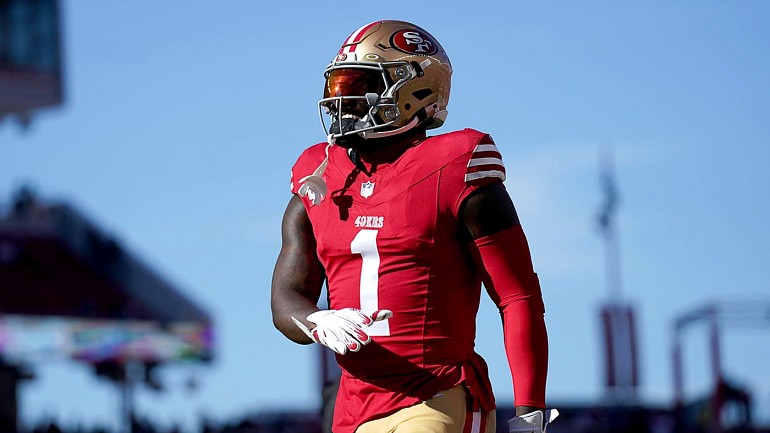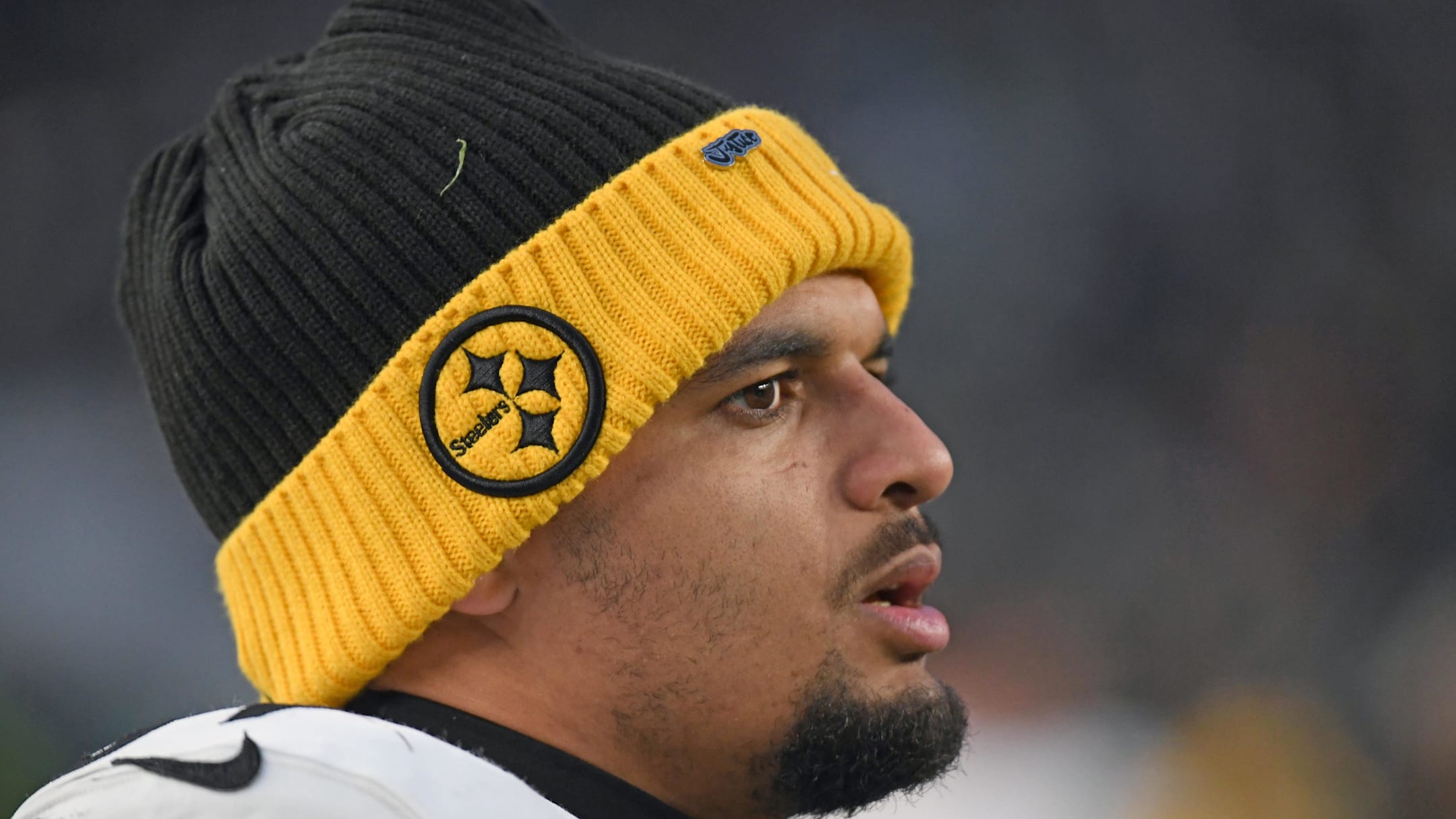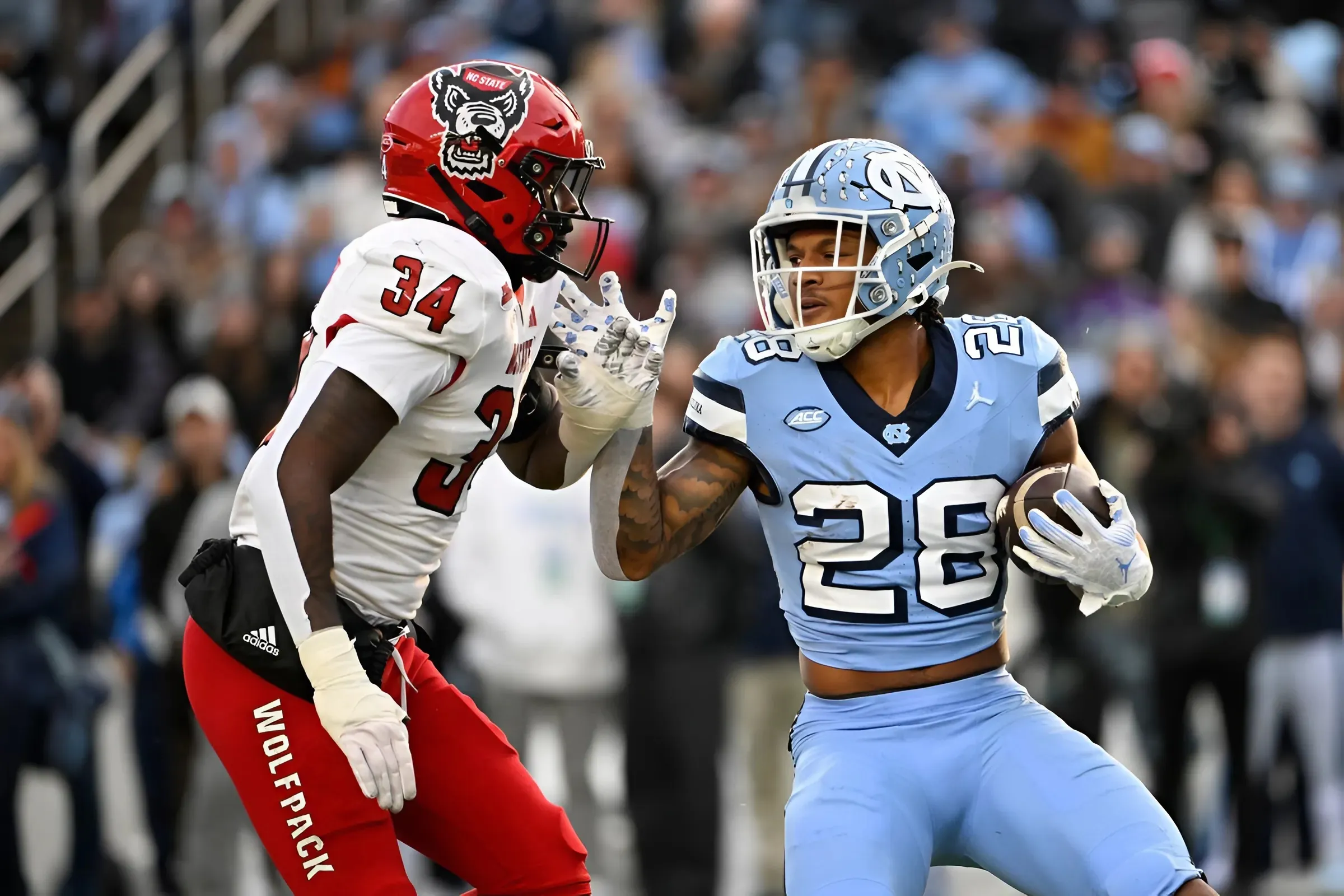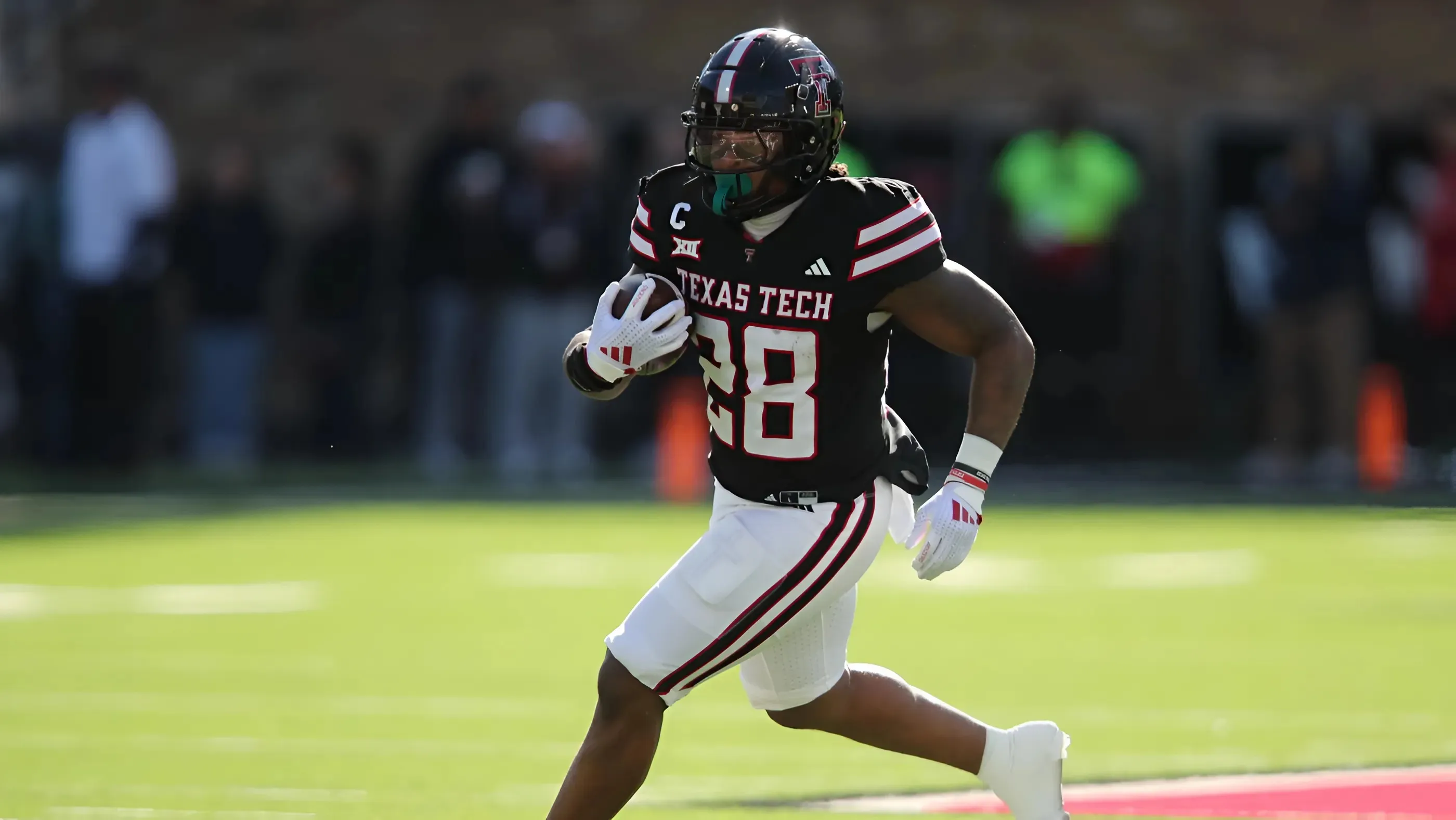There has been only one change to the Commanders roster since early February when we published the last depth chart update — the trade for Deebo Samuel, which will not actually become official until March 12th.
We, however, don’t need to wait until then to put Deebo’s name on our chart and look at where the Commanders will stand on cap space after the deal is finalized, and, with the start of veteran free agency just days away, it seems like an ideal time to take one last pre-free agency look at Washington’s roster.

The updated depth chart
:no_upscale()/cdn.vox-cdn.com/uploads/chorus_asset/file/25896505/depth_chart_4_march_2025.jpg)
The numbers that appear beside some players’ names are 2025 cap hits per Over the Cap. I have not included cap hits below $1.5m.
The Commanders currently have 20 defensive players, 26 offensive players and one special teams player (LS Tyler Ott).
Please note that assigned positions and color coding are my own personal opinions. They do not necessarily represent the thinking of Washington’s coaches or front office, nor are they necessarily consistent with fan consensus. This chart represents my personal interpretation, and may not reflect the thoughts of other writers on Hogs Haven. Finally, when it comes to backup players, I don’t put much effort into making sure that they are on the right or left or behind the specific player that they backup. I mostly just try to fit everyone on the chart efficiently.
This is what I wrote about the roster a year ago (in March 2024):
What is immediately obvious from a glance at the depth chart as it stands today is that the roster has been stripped down to its bare bones. It’s basically a chassis and a damaged engine waiting to be turned into a 10-second car.
There are 49 players on the roster, but on a quick count, I see 14 guys who have proven nothing in the NFL and only about 8 proven starting-quality players. This looks more like a roster of 30-35 NFL players in need of a lot of help.
Washington can add 9 guys in the draft with their current slate of picks, with maybe 6 of them having potential to have an impact on the ‘24 roster, but Washington will likely need to sign as many as a dozen veteran free agents to build a roster that can be competitive in 2024.
A lot of this holds true today. Per Over the Cap, Washington has the 3rd-fewest players under contract among NFL teams at the moment — in fact, with 47 players, Washington has 2 players less than at this time last year, and the Commanders have only 6 draft picks, with three of those being 6th & 7th rounders.
While that sounds a bit grim, there are at least three huge differences between the current situation and the 2024 situation.
First and most importantly is that Washington has its quarterback! Jayden Daniels is the central pillar around which the rest of the roster is constructed. That’s a transformative difference.
Secondly, the team has 30 impending free agents, but most of those are guys who were brought to the team on one-year contracts last year — and significantly, many/most of them can be extended to provide continuity. This is very different from a year ago when Peters and Quinn were obviously shedding players from the previous roster as they sought to establish a new identity.
That leads into the third huge difference. A year ago, no one really knew the identity of the Peters/Quinn Commanders, but after an intense 2024 offseason and successful regular season followed by a playoff run that culminated in an NFC Conference Championship game appearance, the foundation is laid and the expectations have been set.
In short, despite being superficially similar to the 2024 roster situation, the Commanders are much better positioned in March of 2025 than they were a year ago.
Salary cap update, the draft class & the rule of 51
Over the Cap estimates that the Commanders now have $64.4m in available 2025 cap space after including the not-yet-official trade for Deebo Samuel. Interestingly, this is quite a lot less than the $91.5m the team had available last year just before the start of free agency. It is currently the 6th-most of any NFL team, though salary cap positions of all 32 teams will start changing wildly this week as veterans are extended or released ahead of the start of the new league year on March 12th.
Despite having $64.4m in estimated cap space right now, that doesn’t actually represent the amount the Commanders can spend in free agency because they have to use some of it to pay for their draft picks.
To be able to analyze free agent spending, it is critical to understand the Rule of 51 and how it affects team salary cap in the offseason.
The rule of 51
From the roster cutdown deadline following the end of preseason through to end of the league year in March, teams are required to stay within the annual salary cap with their total roster.
But during the off-season, with expanded rosters, this simply isn’t feasible.
Because of this, the CBA establishes the “Rule of 51” that applies to every NFL offseason roster. The rule is very simple:
Throughout the off-season, only the players with the 51 largest cap hits for the season will be counted toward the salary cap.
This is significant because, whenever a player is signed to a new contract, we also have to account for the cap hit of the player he pushes out of the top 51.
Let’s look at the bottom of the Washington roster as it stands today (March 4, 2025). Information is courtesy of OverTheCap
:no_upscale()/cdn.vox-cdn.com/uploads/chorus_asset/file/25896511/temp_bottom_of_roster_OTC.jpg)
Since the Commanders have only 47 players (following the Deebo trade), the cap hits for the next four guys they sign will simply be added to those of the current rostered players.
Once the roster reaches 51 players, however, the cap space impact isn’t as straightforward. Each new player signed is either:
- at or below the current 51-man cut off (at the moment, that would be $840,000)
or
- above the current 51-man cut off (at the moment, $840,000)
If the player is at or below the cutoff, his signing has no impact whatsoever on the 2025 cap space.
If the player is above the cutoff, then the team needs to account for both the cap hit of the player signed and that of the player he displaces on the roster (that would be the guy at the bottom of the list).
Hypothetical example:
Imagine for a moment that the Commanders sign four more practice squad-quality players at a cost of $960,000 each, bringing the roster to a total of 51 players. The Commanders’ available 2025 cap space would drop by $3.84m (4 x $960k) to $60.56m ($64.4m - $3.84m).
Next, assume that the Commanders sign a veteran free agent to a one-year, $3m contract. The available cap space will not fall by $3m. Instead, it will fall by $2.16m. The cap spent increases by $3m for the new player signed, but it also decreases by $840,000 as Michael Wiley is pushed off the list of the 51 largest cap hits. The net change for this $3m contract is $2.16m.
With our hypothetical roster now at 52 players, the available cap, following the rule of 51, will be $58.4m ($60.56m - $2.16m).
Rookie Pool estimates
One thing that every team needs to account for is the money needed to sign drafted players that will be joining the team at the end of April.
With the current CBA and its “slotting” of draft picks, teams can project with a great deal of accuracy the cost of each draft pick.
Absent any trades, even as fans, it’s easy for us to know how much the Commanders are going to need for their draft class before the draft even starts.
Again, though, the Rule of 51 makes the calculation less straightforward than it seems.
Step One of the calculation is simply to identify the team’s draft picks, and the expected contract value of each of those picks. Fortunately, the people at OverTheCap do all that work every season for us, and it’s as simple as clicking the link to the Rookie Pool page at OverTheCap.
Note that OTC has not yet reversed the conditional 7th-round pick from the Steelers for the William Jackson III trade, which did not meet the conditions. That won’t really matter for our example, but we know that the Commanders currently have 6 draft picks, not 7 as shown in the chart.
:no_upscale()/cdn.vox-cdn.com/uploads/chorus_asset/file/25896529/temp_Rookie_Pool.jpg)
Remember that the Rule of 51 means that we’re only counting the 51 highest cap hits for 2025, so, as we add our 6 drafted players to the roster, we need to account for as many as 6 current players being pushed below the top-51 cutoff.
Here’s a reminder of the 8 lowest-paid players on the roster at the moment:
:no_upscale()/cdn.vox-cdn.com/uploads/chorus_asset/file/25896530/temp_very_bottom_of_roster_OTC.jpg)
Let’s look at the expected 2025 cap hits for the 6 drafted rookies that the Commanders expect to sign (taken from the Over the Cap screenshot above):
- Rd 1 $2.495m
- Rd 2 $1.238m
- Rd 3 $1.116m
- Rd 6 $882,871
- Rd 7 $864,438
- Rd 7 $860,921
The Round 1 pick will have a cap hit of $2.495m, but he will push Michael Wiley and his $840,000 cap hit off the list. Net cap hit for Rd 1 pick = $838,076
The Round 2 pick will have a cap hit of $1.238m, but he will push Ben Nikkel and his $840,000 cap hit off the list. Net cap hit for Rd 2 pick = $398,083
The Round 3 pick will have a cap hit of $1.116m, but he will push Kazmeir Allen and his $840,000 cap hit off the list. Net cap hit for Rd 3 pick = $276,389
The Round 6 pick will have a cap hit of $882,871, but he will push Anim Dankwah and his $840,000 cap hit off the list. Net cap hit for Rd 6 pick = $42,871
The #238 pick will have a cap hit of $864,438, but he will push Norell Pollard and his $840,000 cap hit off the list. Net cap hit for #238 pick = $24,438
Now the pattern breaks.
The lowest remaining salary on the top-51 is $960,000 (Villami Fehoko). The final draft pick is projected to have a cap hit of just $860,921, so this final pick is not counted in the top 51, and has no impact at all on the off-season salary cap.
This means that the actual amount of available cap space that the Commanders need to reserve (in this example) is $1,579,857 (The net cap impact of the first five draft picks: $838,076 + $398,083 + $276,389 + $42,871 + $24,438).
The Commanders will need a NET of about $1.6m in cap space to sign their 6 draft picks.
Of course, any trades (up or down) will affect these numbers, but regardless, there will be very little change in the expected $1.6m Washington will need to reserve for the rookie pool.
So, what’s available for free agency?
Over the Cap currently projects available cap space of $64.4m for the Commanders.
The front office needs to reserve about $1.6m for the draft class.
Also, no team can enter the season with zero available cap space; a ‘contingency’ fund is needed for in-season replacements as injuries occur. With rising player salaries, it seems like $5m -$6m needs to be available.
It has been widely reported that veteran defensive lineman Jonathan Allen has been given permission to seek a trade. While he may eventually accept a salary reduction to stay with the team, a trade or outright release seems more likely. Either trade or release would save Washington $16.47m in cap space.
So, let’s do the calculation:
- Currently estimated available ‘25 cap space (47 players) $64.4m
- less: money needed to sign drafted players $1.6m
- add back: savings from Jonathan Allen trade/release: $16.5m
- less: contingency for in-season injuries $5.3m
That leaves about $74m in cap space available for veteran free agency, which begins in less than a week.
This is in addition to the ~$17.4m of cap space (already allocated in OTC’s cap estimates) going to Deebo Samuel when his trade is finalized.
Some 2024 Commanders who could be re-signed by the team this month (not a comprehensive list):
- Bobby Wagner
- Marcus Mariota
- Jeremy Chinn
- Tress Way
- John Bates
- Dante Fowler Jr
- Zach Ertz
- Cornelius Lucas
- Trent Scott
- Noah Igbinoghene
- Noah Brown
- Olamide Zaccheaus
- Jamison Crowder
- Dyami Brown
- Jeremy McNichols
- Sheldon Day
- Jalyn Holmes
- Austin Seibert
- Nick Bellore



